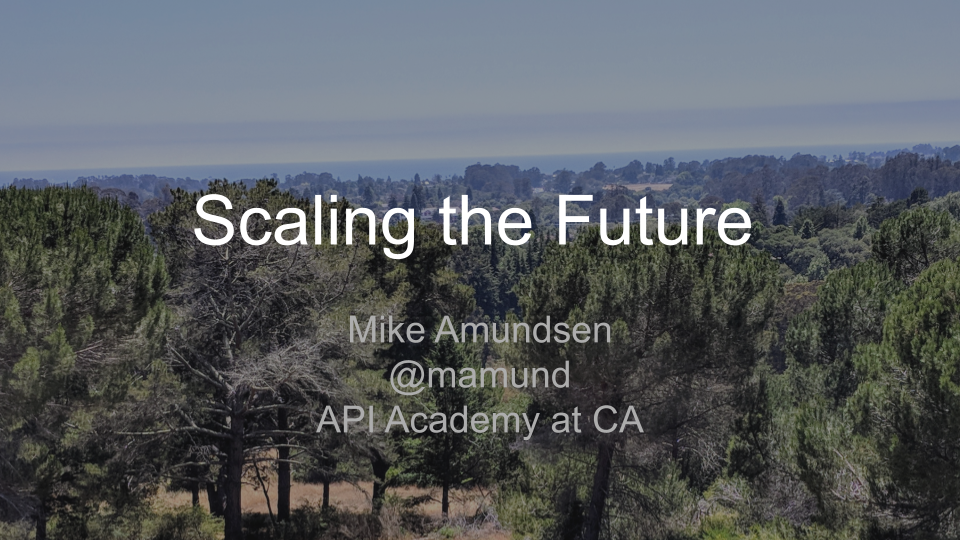Overview
Abstract
Scaling the Future
Symptoms, Infections, and Long-term Cures
What was it about the World-Wide-Web that, in a matter of a few years, scaled so quickly and so easily? Why is there no single developer platform, library, or language for the WWW? Is that its weakness? Or its strength? And what can we learn from the "scaling experience" of the WWW and how can we apply it to today’s need for infinite scalability of functionality instead of just information?
Over the last ten years, several attempts to bring this WWW-level of scalability to services has failed to materialize. Various historical efforts such as RDF, WebServices, SOA, and others have had their day, but failed to achieve the Web’s "un-coordinated" scalability. New attempts like Microservices, Containers, Kubernetes, Reactive, etc are now trying to meet the same goal — and not meeting the challenge, either.
But, in the first few years of the World-Wide-Web, it gained the ability to scale "infinitely" with almost zero co-ordination cost. Essentially, anyone anywhere could add server built with anything and connect it to the WWW without asking permission. This led to adding thousands of public servers to the Internet — servers that didn’t need to agree to a single software platform, rendering engine, or programming language. The WWW ushered in the "anarchic scalability of information."
How did that happen? And can we repeat that same hockey-stick effect with an explosion of infinitely scalable services?
Drawing from information systems research of the last thirty years as well as recent experiences taken from companies of all sizes across the globe, this talk discusses the very real symptoms of an Internet in desperate need of help and identifies the current attempts to address these problems; attempts that often miss the mark, are ill-advised, and — in some cases — are doing more harm than good.
Finally, we’ll list the essential elements needed to design and implement a network of open, independent, and secure services that exhibit low coordination cost and high interoperability. The good news is that all the tech needed to grow this massively scalable future already exists. The even better news is that the organization the cracks this problem first, will have a head start on all their competitors. The question remains: who is ready to tackle this problem and make it possible for everyone to Scale the Future?
Speaker : Mike Amundsen
Lead API Architect, API Academy, CA Technologies
An internationally known author and lecturer, Mike Amundsen travels throughout the world consulting and speaking on a wide range of topics including distributed network architecture, Web application development, and other subjects.
In his role of Director of Architecture for the API Academy, Amundsen heads up the API Architecture and Design Practice in North America. He is responsible for working with companies to provide insight on how best to capitalize on the myriad opportunities APIs present to both consumers and the enterprise.
Amundsen has authored numerous books and papers on programming over the last 15 years. His collaboration with Leonard Richardson titled "RESTful Web APIs" was published in 2013. His 2011 book, “Building Hypermedia APIs with HTML5 and Node”, is an oft-cited reference on building adaptable Web applications. O’Reilly Media released his latest book - "RESTful Web Clients" in March of 2017.
-
Twitter: @mamund
-
Github: http://github.com/mamund
-
LinkedIn: http://linkedin.com/in/mamund
-
Facebook: http://facebook.com/mcaTravels
